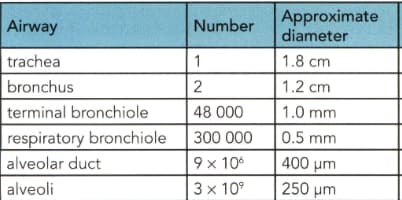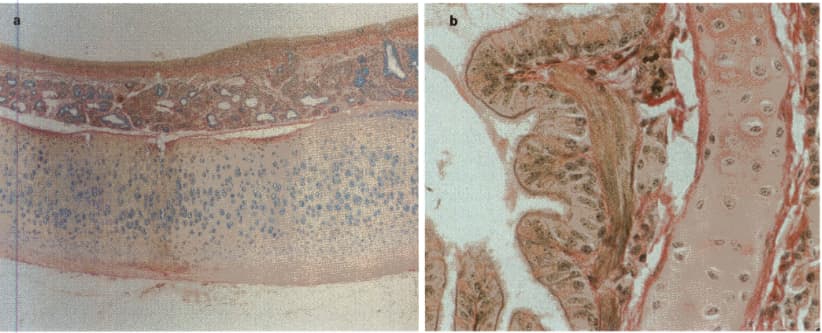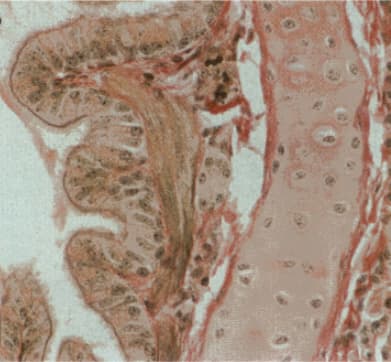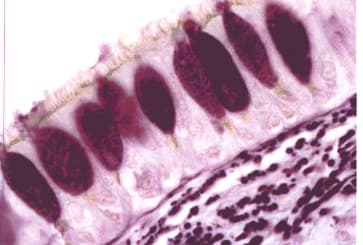HARD
AS and A Level
IMPORTANT
Earn 100
The table shows the number and diameter of the airways in the human respiratory system.

In the given image (a and b), calculate the actual width of the regions of cartilage in the trachea and in the bronchus. Give the formula you use. Show all your work and express your answer to the nearest micrometre.
a. is the TS of the trachea (65) b. is the TS of Bronchi (300)



Important Questions on Gas Exchange
HARD
AS and A Level
IMPORTANT
Use the given figure to help you describe the appearance of smooth muscle in the bronchiole.

HARD
AS and A Level
IMPORTANT
Explain the role of smooth muscles in the gas exchange system.
HARD
AS and A Level
IMPORTANT
Explain why there are so many alveoli in the lungs.
HARD
AS and A Level
IMPORTANT
Use the given figure, to make a labelled diagram of the epithelium of the trachea (Assume that the distance measured on page is 60mm). Indicate the actual depth of the epithelium and show your calculation. (TEM magnification 1300)

HARD
AS and A Level
IMPORTANT
Goblet cells are surrounded by ciliated epithelial cells in the gas exchange system. They are also found in the small intestine where they are surrounded by cells with microvilli. What are the similarities and differences between the cilia and microvilli?
HARD
AS and A Level
IMPORTANT
Describe in detail that can be seen in a TEM of a ciliated epithelial cell that cannot be seen under high power with a light microscope.
HARD
AS and A Level
IMPORTANT
Describe the pathway taken by a molecule of oxygen as it passes from the atmosphere to the lungs.
HARD
AS and A Level
IMPORTANT
Explain how alveoli are adapted for gas exchange.
